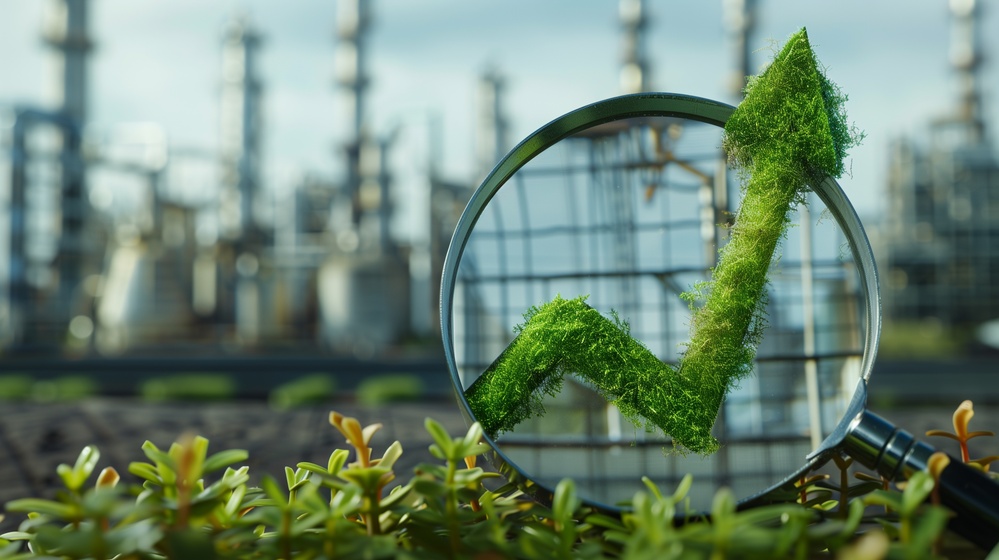Manufacturing plays a critical role in the economy, providing millions of jobs and producing many products we use and rely on every single day. Nonetheless, traditional industrial manufacturing processes and practices also have major negative impacts on the environment that cannot be ignored:
- Extremely High Energy Usage: Factories, plants and production lines require staggering amounts of energy for operations like heating, cooling, lighting, and powering all the machinery and equipment. This high energy demand directly contributes to increased greenhouse gas emissions from burning fossil fuels.
- Depletion of Natural Resources: Manufacturing at a large scale consumes and depletes vast quantities of raw materials like metals, minerals, petroleum-based products, and wood. This extractive strain on natural resources is unsustainable long-term.
- Hazardous Waste and Pollution: Besides materials consumed, industrial byproducts and waste streams from manufacturing processes include harmful chemicals, gases and contaminated wastewater that can pollute air, water sources and soil when improperly managed.
To create a more environmentally sustainable future for all, the manufacturing sector must aggressively transform operations, processes, and practices to be eco-friendly and more conscientious of the environmental impact.
Driving Energy Efficiency Across All Operations
One of the biggest areas for reducing environmental harm from manufacturing is dramatically increasing energy efficiency across all facilities and along entire production lines:
- Upgrading to Energy-Efficient Equipment: Replacing older, outdated, and inefficient machinery, tech and operational equipment with new energy-saving models that meet modern efficiency standards.
- Comprehensively Optimizing Processes: Thoroughly streamlining workflows, manufacturing steps and material/product flows to cut out any wasted energy from unnecessary actions or inefficiencies.
- Implementing Advanced Energy Monitoring and Management: Using special monitoring and analytics systems that precisely pinpoint areas and opportunities for improved energy use and conservation measures.
- Supplementing with Renewable Energy Sources: Manufacturing facilities can offset traditional energy usage by integrating renewable sources like solar panel arrays, wind turbines or biofuel/biomass systems.
The experts at Commonwealth tell us that making a serious shift to renewable energy provides a clean, sustainable way to cost-effectively meet the power needs of large-scale industrial manufacturing.
Maximizing Resource Efficiency and Minimizing Waste
Besides energy usage, minimizing the depletion of raw material resources and reducing hazardous waste streams is another crucial focus area for sustainable manufacturing:
- Prioritizing Sustainable Material Inputs: Shifting towards using more recycled materials, renewable resources, and eco-friendly alternatives as inputs in the manufacturing process.
- Implementing Closed-Loop Systems: Recycling or repurposing manufacturing byproducts and waste streams internally helps create more closed material loops with less waste leaving facilities.
- Establishing Robust Re-Manufacturing Programs: Refurbishing, reconditioning, and rebuilding outdated or worn products prevents premature disposal into landfills and reduces resource usage.
- Adopting Cutting-Edge Green Production Innovations: Many emerging advanced technologies are enabling and supporting even greener and more sustainable approaches to manufacturing:
- Additive Manufacturing and 3D Printing: Additive production methods create far less hazardous waste compared to traditional subtractive manufacturing techniques.
- Industrial Biotechnology: Using biological organisms like bacteria, enzymes and microbial cells in industrial processes requires less energy and fewer toxic chemicals.
These cutting-edge “green factory” innovations help create highly efficient, low environmental impact production operations.
The Essential Path Forward
While meaningfully shifting to more sustainable manufacturing requires notable investment and change management, it’s an essential evolution that cannot be ignored. Prioritizing energy efficiency, sustainable material sourcing, minimizing waste streams and embracing new green production innovations means manufacturers can dramatically reduce their environmental footprint.
Conclusion
With smart strategies successfully implemented and the latest clean technologies leveraged in unison, the manufacturing sector can undoubtedly play its vital part in building a greener, more sustainable world for all future generations to thrive in. The path starts with an unwavering commitment to transforming long held yet dated industrial practices.




